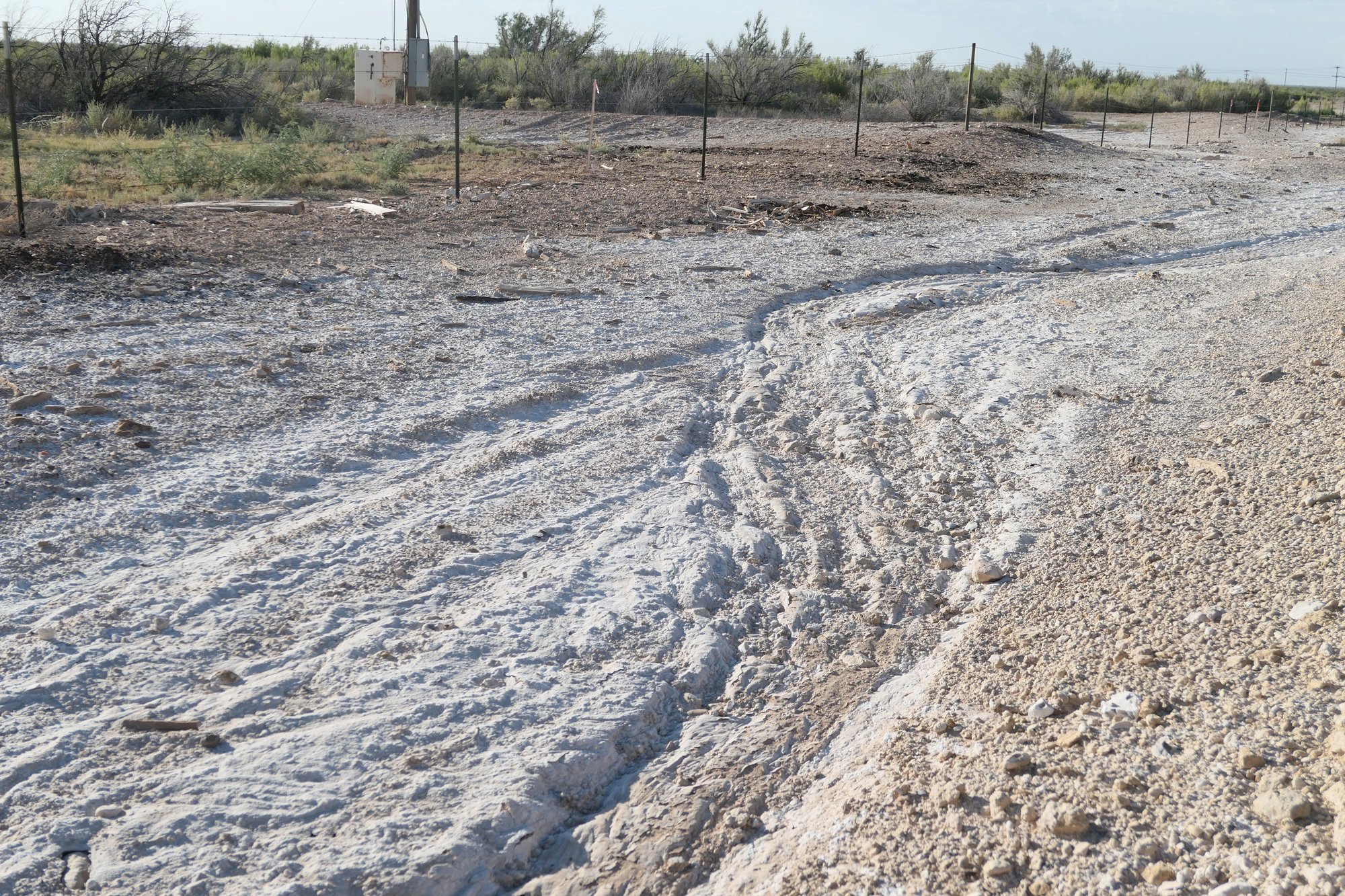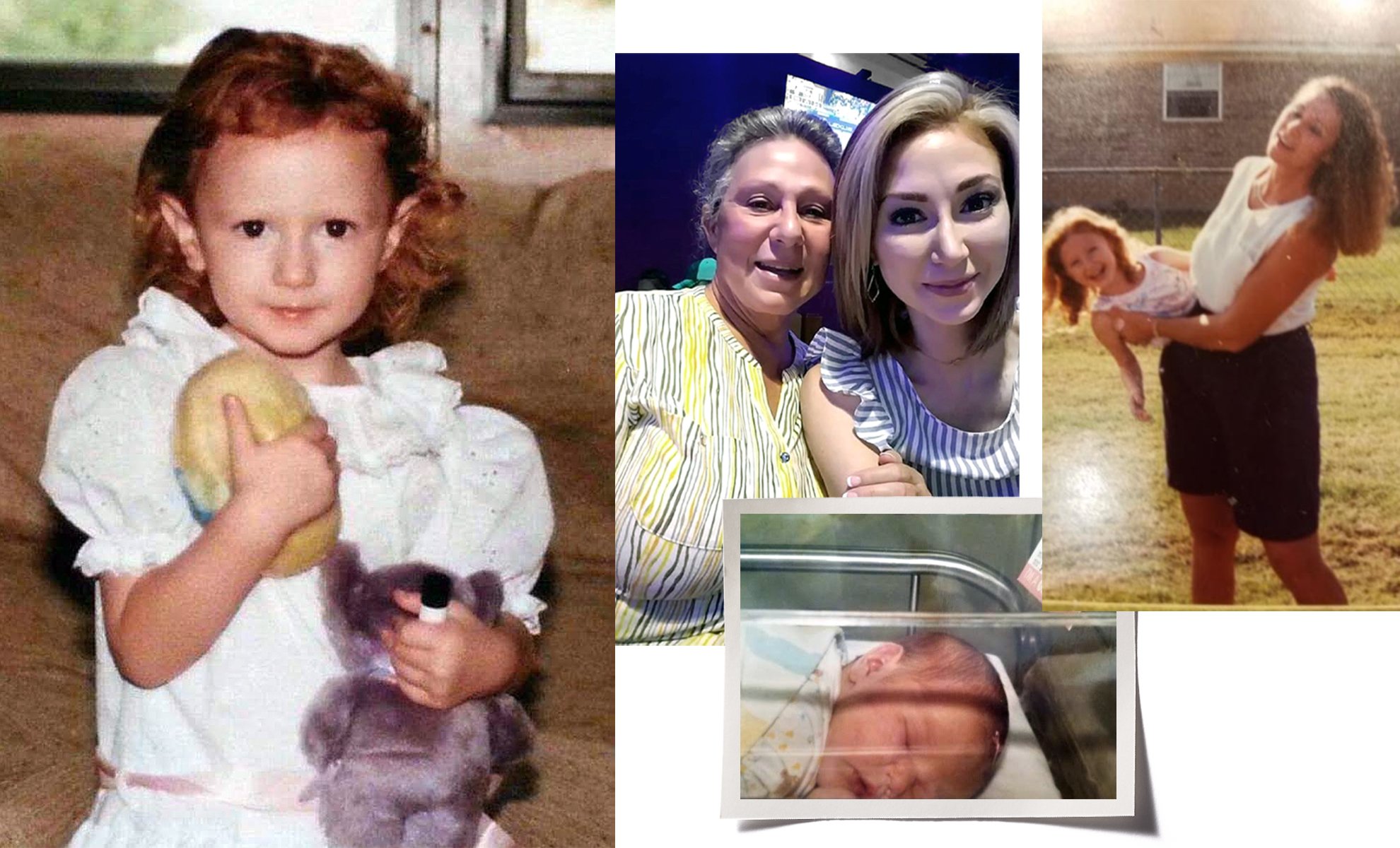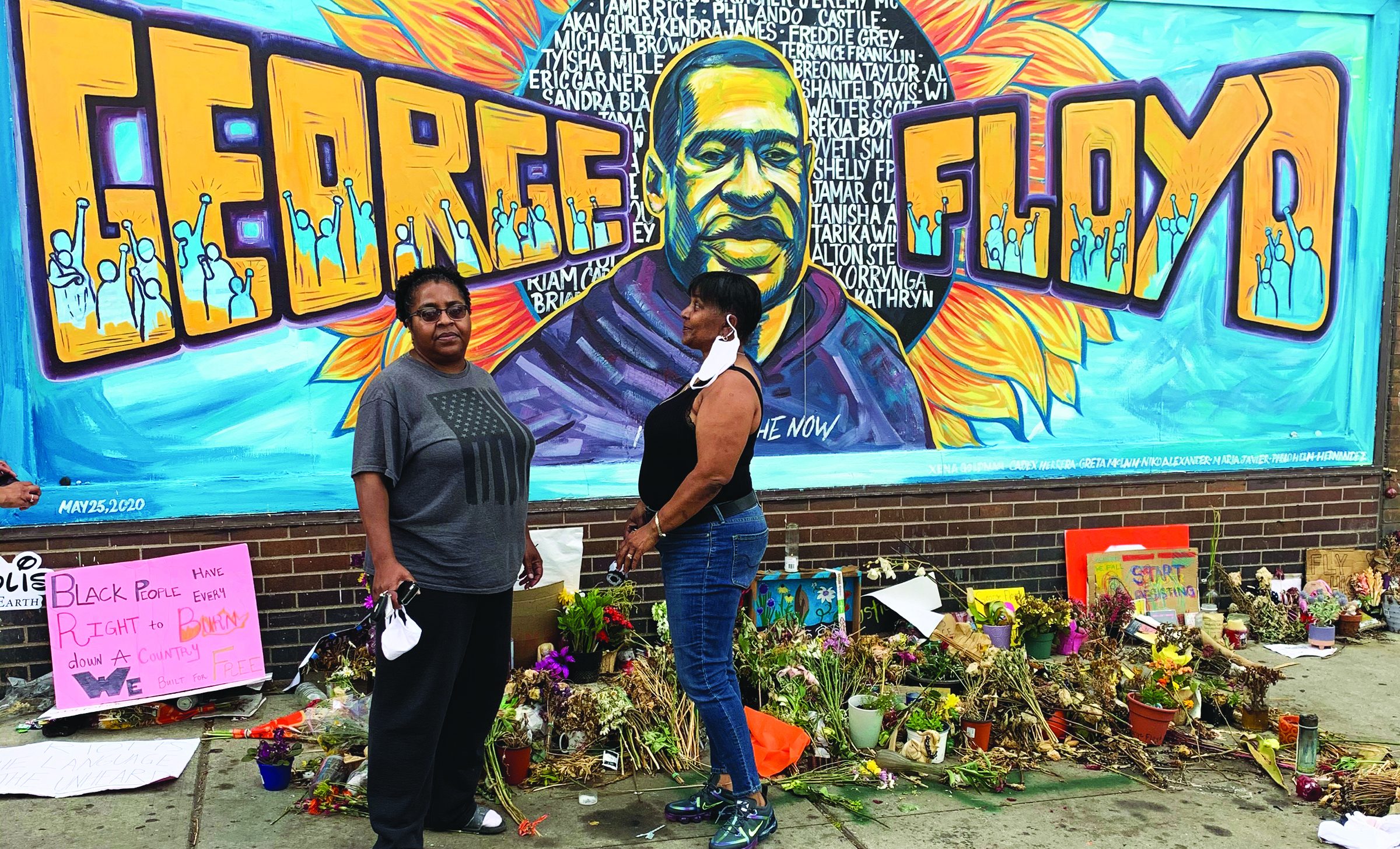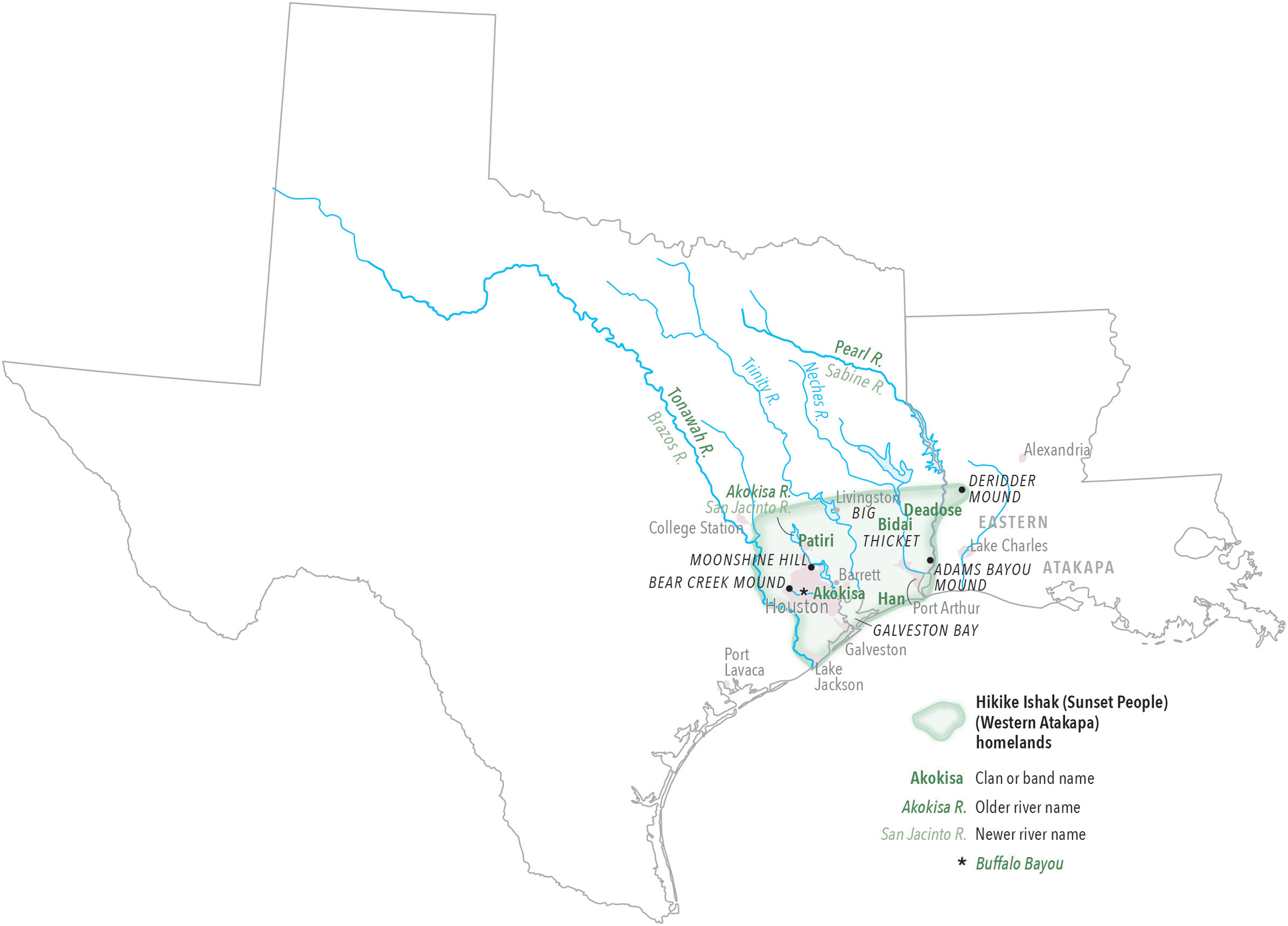
Mapping Indigenous Communities of Texas: Atakapa Ishak
The Ishak built mounds tall enough to escape floods and hurricanes in southeast Texas.
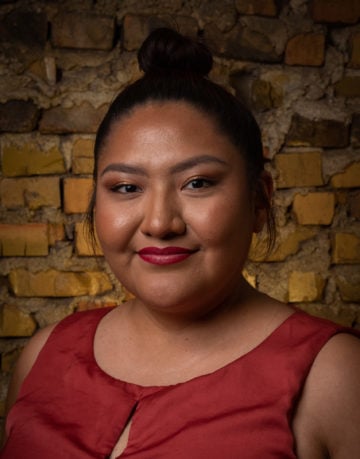
The Atakapa Ishak have lived for thousands of years in the lush green forests of southeast Texas where the Galveston Bay and the Big Thicket meet. Ishak means “people” in the Atakapa language and they built communities off the San Jacinto and Neches rivers. As colonizers entered the homelands of the Ishak, they moved into the deep swamps of east Texas and Louisiana where giant Cypress trees reigned over the muddy, marshy landscape.
The Atakapa are made up of different clans—the Patiri, Akokisa, Bidai, Deadose, and Han. Before contact, the Atakapa grew crops and were skilled fishermen known for their dugout canoes made from a single tree trunk. They built giant mounds that served as places of worship and sites for their leadership to come together. The Atakapa also buried those who passed away in small mounds. Today, smaller, more rural coastal communities continue this traditional practice.
As part of the Texas Observer’s land acknowledgement process, we are collaborating with tribal representatives to map their homelands and significant places in Texas, on their own terms. Mary Leblanc is Akokisa and a retired tribal council member for the nation. Her grandparents were born and raised in the Big Thicket. In this interview, we explore her tribe’s history and ties to Texas.
Texas Observer: Do you prefer to be called Akokisa, Hikike Ishak, or Atakapa Ishak?
Mary Leblanc: Actually, all of those are different clans. Akokisa are the People of the River, which refers to the San Jacinto River and that clan. Hikike Ishak are the Western Atakapa. So, you’re just saying the same thing in a different language.
How did the Atakapa Ishak people come to live in the land currently known as Texas and can you talk about the sites that are listed on the map?
We’ve been here several thousand years. This is our homeland. We go back to the end of the Ice Age. Evidence suggests there’s been continuous occupation.
In Houston, Bear Creek mound was a very sacred and important place. It sat where Bear Creek park is today. Once there was a great mound there, which was important to this area. It was the seat of government as well as religion. Bear Creek mound stood at the headwaters of Buffalo Bayou, which runs through downtown Houston. There were several villages along Buffalo Bayou and then the mound at the headwaters. Back then Buffalo Bayou ran crystal clear. Today it’s cloudy with pollution and you don’t want to get that nasty water on you. But in my grandmother’s day it was crystal clear. Buffalo Bayou was named for the millions of buffalo fish which used to live in it. Today the fish are all gone.
Bear Creek Mound was a big mound—600 feet long and 40 feet high. It served several purposes: It had a flat area on top that was big as a football field. This is where people came together for ceremony. It was the place where we stored our excess produce from our farms and hunting, [for] use in time of need, if there was a crop failure or a drought. The top of that mound was the place of refuge to which people went in times of floods or hurricanes. The flood waters never reached the top and people could camp up there and be safe. The top of the mound was encircled by a wooden palisade which kept predators and enemies out. The big mound was bulldozed and was lost to us, but the site where it was remains very special.
Can you talk more about the different clans that you mentioned on the map and the places they belong to?
We have multiple clans in this area, starting over at the east by the Bidai. Bidai means brush and that area is really essentially a jungle. It’s the Big Thicket. The Brush People live in what used to be a jungle. The Deadoses live a little further inland from them. The Patiri, another clan, they live a little northwest of us. Akokisa, we live along the San Jacinto River. There’s another clan down the coast the Han and they are, generally, fishermen. There’s other clans in Louisiana but they’re Eastern Atakapa. They got a whole bunch of clans over there.
How did the Atakapa avoid removal?
Well, people gossip. We heard about what was going on back eeast. There was a big group of Cherokee that moved to this area in in about 1820-something. They were running ahead of removal back east, and Texas was at that time a separate nation, not part of the United States. We heard from them all about the removal that was going on in other places, and so we basically looked around and decided we were not numerous or strong enough to stage any kind of war or resistance. We just went back into the swamp, which is what a lot of Gulf Coast tribes did. We went into lands where the Europeans did not want to live. The policy of avoiding white people kept us alive and in our homeland. All along the coast of southeast Texas and Louisiana,, you find pockets of Native people who basically moved into inaccessible places, trying to avoid those people.
How long did the Atakapa hide? How long did that last?
We didn’t really start having problems until right after the Civil War. About 1870, Europeans became a lot more aggressive moving in here and we decided we needed to take aversive action. We stayed back there [in the swamp] as long as there was hostility to us. Most of us were out [of hiding] by the 1950s, but it was still very rough. I grew up in a time when being Native American around here meant you got a lot of problems. They would come by and shoot into our house and we were roughed up at school. They let us know we were not welcome.
Of course some people stayed back in there, and that’s where the culture is strongest is back in the swamps. If you want to see Gulf Coast culture, you need to look at some of the coastal villages, which really didn’t always have that much contact with Europeans. The only way to get back there is by boat, and there was no good reason anybody wanted to go back there because there was nothing but a bunch of Indians and alligators. That’s where people still do mound burials and things like that.
What are some other misconceptions that Texans have about Atakapa people?
We’re still here, but rather quietly. We tend to keep a low profile.There’s a lot of Eastern Atakapa in Houston. They’ve moved over here for work. Houston has a sizable Native population, but no organization and no voice. There’s a lot of Choctaw in this area and a lot of Cherokee. Like I said, most of the people are completely unaware that this area had any Natives or what the culture was. And [land developers] keep destroying our mounds and other sacred places. It’s like they’re wiping us out. I mean, our mounds are very sacred to us, but every time they become aware of one somehow it manages to get bulldozed. They talk to us about preservation, but they never do. There’s a whole long list of mounds that have been destroyed within my lifetime. It’s like they’re trying to wipe us off the map and forget we ever existed.
There’s still a community here. We have a dance ground, which is what Gulf Coast people do. It’s like a community center. It’s where we gather for our ceremonies. Each clan has a clan house and we have ceremonies at specific times of the year. We’re still together and an active group of people. We do keep a low profile because there are people around here who will harass us and do damage. We used to have a dance ground that people knew about, but we had threats of people shooting it up. We moved the dance ground, and now just members of the tribe know where that’s at. We feel a lot safer. I mean, this is southeast Texas and we got a lot of Klan members and people like that. So, we do have to have security.
What are some ways that folks can learn more about the Atakapa people?
Occasionally, we participate in powwows and things like that. All of our tribal ceremonies are closed to outsiders because we’ve had some trouble. Some of our younger members have been known to go out and give speeches. There isn’t much out there right now. We need to really become a lot better known in the Houston area. Houston needs to know that it has a history going way back. And this is something to be proud of and to carry.
Indigenous Affairs stories are produced with support from the Economic Hardship Reporting Project.

